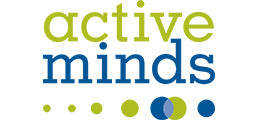“My own personal philosophy is that players should be able to do bodyweight squat, lunges, and pushups correctly before we load them up with weights.” – Tony Maddalone, Strength Coach at the University of Utah
Meet Tony Maddalone. Tony has served as a Strength Coach at the University of Utah for five years, focusing mostly on football. He played Division I football in college, where he earned his bachelor’s degree in exercise science. He’s been a key member of exciting football games, such as Utah’s double overtime victory over a number five-ranked Stanford last year. I spoke with Tony last week about his experiences as a strength and conditioning coach for the Utes, use of bodyweight and stability training for all of his athletes, and overcoming a tough battle with an autoimmune disease.
Most Impressive Player Experience
Tony has coached some extremely talented players with tremendous leadership skills during his tenure at Utah. Of all the players he worked with, his most memorable player was Star Lotulelei. Star was the 14th overall pick in the 2013 NFL draft, and is currently a defensive tackle for the Carolina Panthers. He stands at 6’ 2’ and weighs 320 pounds. Tony recalls the impression Star made on him in during training and in games: “He would squat 600 [pounds] for six [repetitions] easy and bench-press over 500 pounds when he was here. His accelerative ability was insane. Being able to hold a really low angle in his stance takes a lot of leg strength and explosiveness. He had a combination of those two qualities, in a very large individual who was mentally tough. He tore people up when he was here.”
Balance & Stability Exercises, Not Just Heavy Weights
Tony made it very clear that developing large athletes like Star was not all about getting them to lift more and more weight. Balance and stability exercises and stretches play a large role in the process. Tony says, “We start every single day with bodyweight exercises, such as lunges and quad stretches. If one leg is a lot stronger, generally they’ll have a lot better balance with that leg. Just by watching someone do these simple movements I can tell if they are any ankle mobility issues.” Building strength, according to Tony, requires stability training. For example, Tony says, “Stability training really really helps with squats. A lot of people don’t realize how much you actually use your core when you squat. I like to use stability exercises to train the core. For our guys in football, you have to be able to tense up at the right moment to take hits and to deliver hits. To have that strength and solid position is really important.”
Bodyweight Exercises for Injury Prevention
Form is often overlooked in the weight room, losing out to the much sexier and quantifiable measurement of pounds lifted. Tony emphasizes the importance of establishing proper form prior to lifting heavy weights. Tony says, “We start players with bodyweight exercises when they start the program. My own personal philosophy is that players should be able to do bodyweight squat, lunges, and pushups correctly before we load them up with weights. We have a General Physical Preparedness (GPP) phase where they perform simple movements to make sure the muscles, tendons, and ligaments are well-prepared. A lot of times we find issues with these basic movements that can help us identify a mobility issue that we can address and fix. Otherwise, it never gets fixed. It just gets worse.”
Training Non-Football Athletes
Tony doesn’t just train football players. He works with many teams on the University of Utah campus, including the women’s cross country team. “Cross country training is a completely different animal than football,” Tony says. He trains both mid- and long-distance runners, which require different approaches. “We work on the muscle endurance for the [long] distance runners,” Tony says. “They get such a large running volume, we don’t do a ton of weights. We do a lot of recovery activity to keep them healthy during the season. With mid-distance, there’s a little more power involved and it’s a hybrid between distance and sprinting. They need some of the fast twitch fibers to fire later in the race.”
Pushing Through Chemo to Work Out & Innovate
Tony suffered from kidney failure last December as a result of an autoimmune disorder called glomerulonephritis. Despite losing his kidneys and undergoing chemotherapy, Tony wanted to get back to work quickly – which for him means getting back in the gym. “They gave me chemotherapy to suppress my immune system and that made it a challenge to work out” Tony said. “Touching barbells that other people had been touching could get me sick, and at the time it could risk my life. I tried to use hand sanitizer and then chalk. I would switch back and forth. Then I played around with some formulas and combined that two.” Tony created Hand Armor Liquid Chalk which is used by the University of Utah, among other institutions. Tony summed up his battle by saying, “I’d tried to pull something positive out of the whole experience.”
We'd love to hear from you. What did you find most surprising about Tony’s approach? Comment below or on our Facebook page at facebook.com/flytefitness, or tweet us at @flytefitness.
Be Flyte Fit,
Jeremy Greenberg
Co-Founder & CEO
Flyte Fitness
